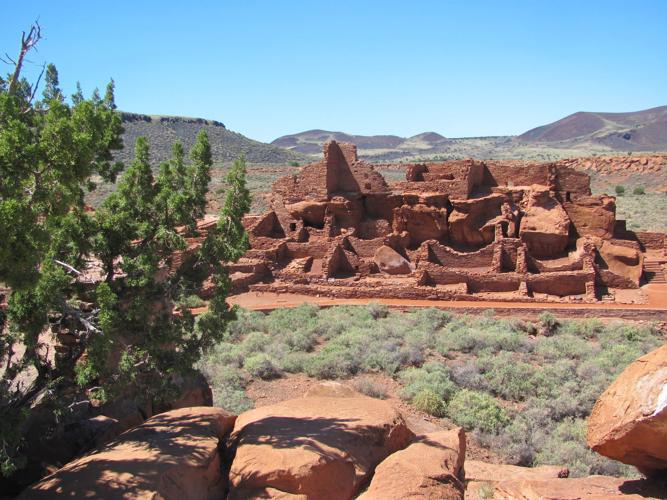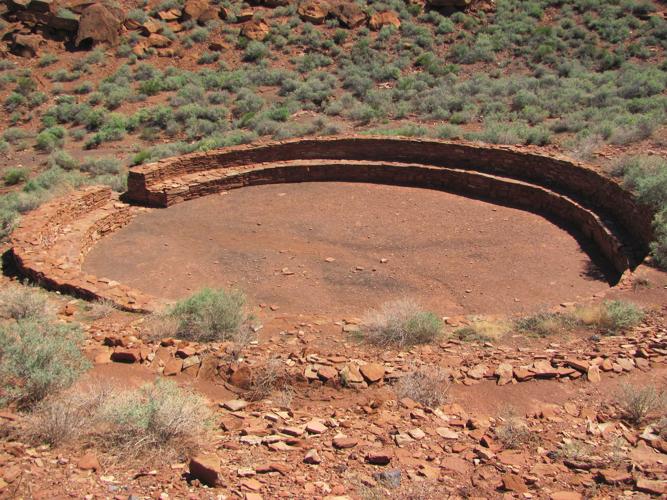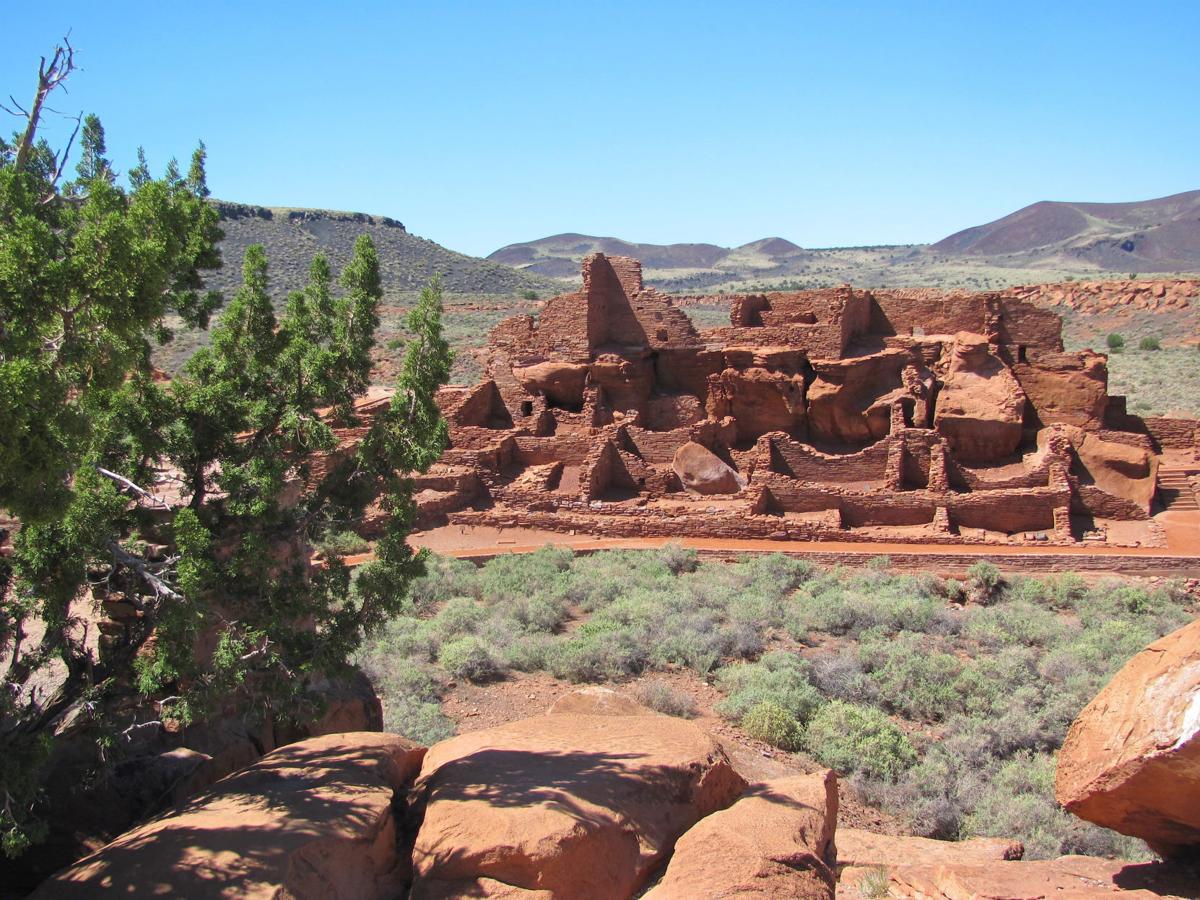A multi-level condo complex with about 100 rooms — built some 900 years ago — has held up far longer than we can expect for comparable housing units today.
Known as Wupatki Pueblo, the ancient stone-walled site is the striking centerpiece of a national monument northeast of Flagstaff.
Wupatki National Monument is open daily and includes a half-mile trail encircling the pueblo with information panels along the way. Several outlying pueblo sites are also open to the public and can be reached via short drives on paved roads.

Visitors take in the view of Wupatki Pueblo from a trail surrounding the site northeast of Flagstaff. — Credit: Doug Kreutz / Arizona Daily Star
LIFE IN THE PUEBLO
Settled in the 1100s, Wupatki was located at the crossroads of Sinagua, Cohonina and Kayenta Anasazi cultural traditions. The exchange of ideas is evident in homes built in the Anasazi way but furnished with Sinagua-style pottery, textiles and tools, according to information provided at the monument.
The surrounding land provided ideal construction materials. Sandstone slabs, limestone blocks and chunks of basalt set with a clay-based mortar yielded buildings that partially endure to this day with help from stabilization work.
“It is remarkable that this land, so dry and hot, supported a large farming community” (where residents cultivated corn, beans and squash) says an information panel along the monument trail. “Moisture-conserving cinders from the eruption of nearby Sunset Crater volcano (sometime between 1040 and 1100) made for slightly better farming conditions during the 1100s.”
The location and size of the pueblo — with its 100 rooms, large plaza and ceremonial sites — suggest that it may have been a meeting place and regional center for trade, according to the National Park Service, which manages the site.
An information panel notes that “Hopi and Zuni oral histories say this was a place where people of diverse origins came together. Varying influences are apparent. The plain red-brown pottery came from the area near modern-day Flagstaff, while the painted black and white pots came from Kayenta country to the northeast.”
Wupatki Pueblo was once a large and thriving community, but it apparently was largely abandoned after about 100 years.
Why?
“The reasons for leaving were likely varied,” notes the Park Service. “By the 1200s, the area was denuded of trees and shrubs and soils were depleted. As the environment changed, perhaps conflicts increased or trade networks shifted and other villages had more to offer.”

Wupatki Pueblo was fashioned from stone and clay mortar about 900 years ago. — Credit: Doug Kreutz / Arizona Daily Star
VISITING WUPATKI
From Tucson, drive north on Interstates 10 and 17 to Flagstaff and continue northeast from Flagstaff on U.S. 89.
One scenic approach to the site is to take a signed turnoff for Sunset Crater Volcano National Monument 12 miles north of Flagstaff. Sunset Crater has a visitor center and trails near lava flow sites and cinder cones.
A paved 35-mile loop road leads from the Sunset Crater entrance to Wupatki National Monument. A single entrance fee of $25 per vehicle covers admission to both monuments.

Visitors take in the view of Wupatki Pueblo from a trail surrounding the site northeast of Flagstaff. — Credit: Doug Kreutz / Arizona Daily Star

A ceremonial site at Wupatki Pueblo. — Credit: Doug Kreutz / Arizona Daily Star








